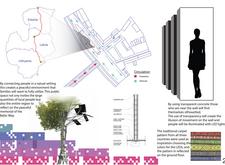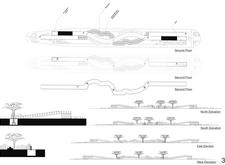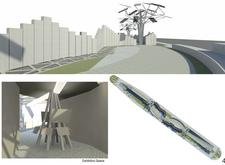5 key facts about this project
# Analytical Report on the Baltic Way Memorial Architectural Design Project
## Overview
The Baltic Way Memorial is situated within the historical context of the Baltic States—Estonia, Latvia, and Lithuania—dedicated to commemorating the peaceful protests of August 23, 1989, during which over two million individuals joined hands to form a human chain across the three nations. The intent of the memorial is to foster a public space that honors this pivotal moment in history while promoting community interaction and engagement.
## Spatial Strategy and User Engagement
The layout incorporates dual pathways designed for both pedestrian and vehicular access, enhancing the overall accessibility of the site. Strategic arrangements of gathering spaces facilitate ease of movement through the memorial, promoting community connections and individual reflection. Interactive elements, such as seating areas and exhibition spaces, encourage visitor participation and dialogue, ensuring that the memorial serves as a dynamic public resource that connects generations.
## Materiality and Sustainability
The design features innovative materials that symbolize the themes of transparency and sustainability. Transparent concrete serves as the primary material, allowing natural light to filter through and creating engaging light patterns throughout the day. Embedded LED lights provide a visual representation of the human chain during nighttime, adding an additional layer of sensory experience. Furthermore, solar trees equipped with solar panels contribute renewable energy to the lighting system, underscoring the integration of sustainable practices within the memorial. Inside the exhibition areas, materials such as wood and reinforced concrete are employed to create a contrasting tactile experience that augments the narrative conveyed through the memorial’s design.
This carefully considered use of materials and spatial organization not only honors the historical significance of the Baltic Way but also serves to enhance the visitor experience, emphasizing reflection and engagement with the memory that the memorial encapsulates.






















































